Understanding Pollution Liability Coverage Essentials
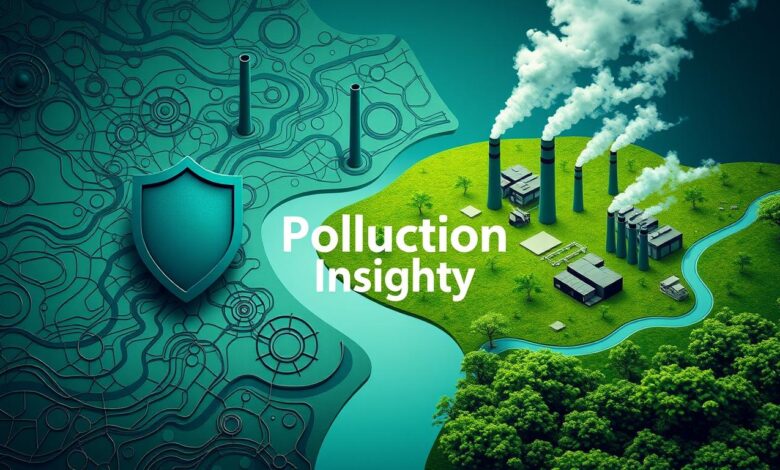
In today’s world, environmental issues are a big deal. That’s why pollution liability coverage is so important for businesses. Do you know what risks your company might face without the right insurance?
This article will cover the basics of pollution liability coverage. We’ll look at what it is, its main parts, and why it’s key for companies. By the end, you’ll know how this insurance can help protect your business from environmental problems.
Key Takeaways
- Pollution liability coverage protects businesses from the financial and legal risks associated with environmental incidents and contamination.
- It covers cleanup costs, third-party claims, and legal defense expenses, ensuring your company is shielded from the potentially devastating impact of environmental liabilities.
- Understanding the specific pollution risks your business faces is the first step in determining the appropriate coverage.
- Pollution liability coverage can take various forms, including site-specific and contractor’s policies, each addressing unique environmental exposures.
- Careful evaluation of potential exposure and policy options is crucial in securing the right pollution liability coverage for your business.
What is Pollution Liability Coverage?
Pollution liability coverage is a key insurance for businesses. It shields them from the costs of environmental pollution. This includes third-party claims, cleanup costs, and legal defense.
Definition and Key Components
This insurance, also known as environmental liability insurance, offers several protections. It covers bodily injury, property damage, and cleanup costs from pollution. It also includes legal expenses and settlements from environmental lawsuits.
Why It’s Crucial for Businesses
In today’s world, pollution liability coverage is vital for businesses. Pollution incidents can cause huge financial losses. This includes fines, cleanup, and legal costs.
This coverage protects businesses from these risks. It ensures they can keep running and stay financially stable after an environmental incident.
“Pollution liability coverage is a critical safeguard for businesses operating in industries with environmental risks. It provides the financial protection needed to navigate the complex legal and regulatory landscape surrounding environmental incidents.”
Understanding pollution liability coverage helps businesses protect themselves. It’s key to keeping operations going and avoiding huge financial hits.
Identifying Pollution Risks
It’s vital to protect your business from pollution’s financial and reputational harm. To get the right pollution liability coverage options, you must know the pollution risks your business faces.
Storage tank leaks are a big pollution risk. Old or poorly maintained tanks can spill hazardous substances like fuel or chemicals. This can cause expensive cleanups and legal troubles.
Improper disposal of hazardous waste is another major risk. Companies that handle hazardous materials must follow strict rules for disposal. Not following these can lead to environmental damage and hefty fines.
Accidental spills and releases are also a big pollution risk. These can happen due to equipment failure, human mistakes, or natural disasters. They can harm the environment and your company’s environmental pollution protection.
To tackle these pollution risk mitigation challenges, do a detailed risk assessment. This should find out where pollution can happen, how likely it is, and what the effects could be on your business and the environment.
Knowing your pollution risks helps you get the right pollution liability coverage. This way, you can protect your business and the environment.

| Pollution Risk | Description | Potential Impact |
|---|---|---|
| Storage Tank Leaks | Aging or improperly maintained storage tanks can release hazardous substances into the environment. | Costly cleanup efforts, legal liabilities, and environmental damage. |
| Hazardous Waste Disposal | Improper disposal of hazardous materials can lead to environmental contamination. | Penalties, environmental damage, and reputational harm. |
| Accidental Spills and Releases | Equipment failure, human error, or natural disasters can cause unintended releases of pollutants. | Cleanup costs, legal liabilities, and environmental impact. |
Types of Pollution Liability Coverage
Businesses face two main choices for pollution liability coverage options: site-specific and contractor’s pollution liability. Knowing the differences between these pollution insurance policy options helps companies protect themselves.
Site-Specific Pollution Liability
Site-specific pollution liability covers a business’s physical site, like a factory or office. It pays for cleaning up pollution on the site and for claims from others harmed by pollution. This pollution insurance solutions is crucial for keeping a business’s location safe.
Contractor’s Pollution Liability
Contractor’s pollution liability is for companies working at client sites or on projects. It covers the contractor’s responsibility for pollution during their work. This includes the cost of cleanup, claims from others, and legal fees.
| Coverage Type | Key Protections | Typical Scenarios |
|---|---|---|
| Site-Specific Pollution Liability |
|
|
| Contractor’s Pollution Liability |
|
|
Understanding the unique aspects of these pollution liability coverage options helps businesses assess their risks. They can then pick the pollution insurance policy that fits their needs best.
pollution liability coverage
Pollution liability coverage is key for businesses to avoid big financial hits from environmental problems. It protects against many pollution-related risks. This helps companies in many industries stay safe.
This coverage helps pay for cleanups, fixing damage, and legal costs from pollution. It’s for sudden spills, slow leaks, or old pollution. It helps businesses keep running without huge financial losses.
Scope of Coverage
Pollution liability coverage covers a lot, including:
- Cleanup and fixing of soil, water, and other areas
- Claims for injuries and damage to others’ property
- Legal costs and settlements for pollution lawsuits
- Losses from business stops due to pollution
- Safe moving and getting rid of dangerous stuff
Each policy might be different, but the main goal is to protect businesses. It helps them deal with the money side of environmental problems.
Exclusions and Limitations
But, there are things pollution liability coverage doesn’t cover, like:
- Acts done on purpose or as a crime
- Known pollution before getting the policy
- Slow pollution over time
- Some pollutants, like asbestos or lead paint
Knowing what’s not covered is key. It helps businesses make sure they have the right protection. They can then handle their environmental risks better.
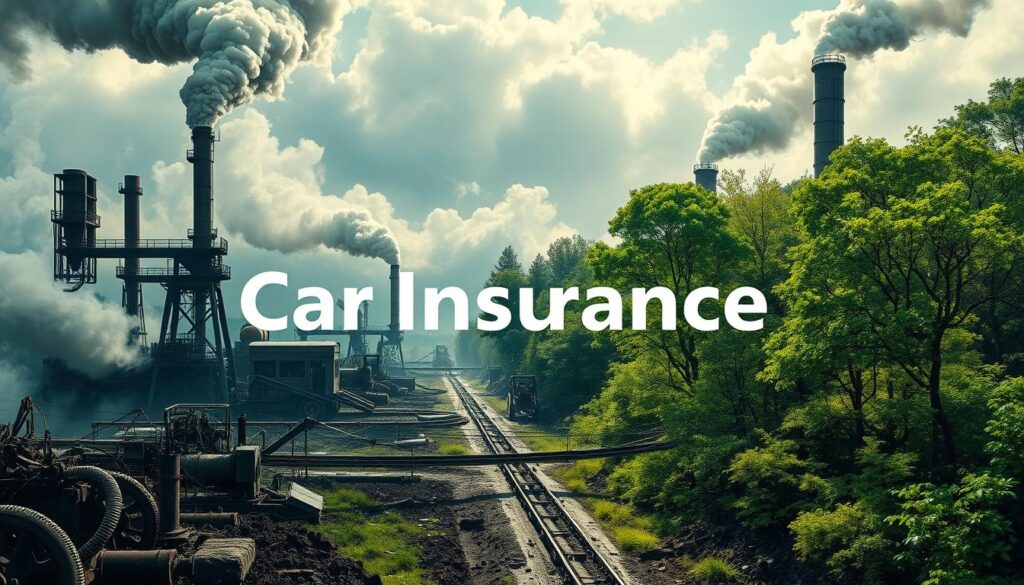
In short, pollution liability coverage is a must for businesses with environmental risks. By knowing what’s covered and what’s not, companies can protect themselves. This way, they can avoid big financial hits from environmental problems.
Determining Coverage Limits
Protecting your business from pollution-related financial risks is key. You need to find the right coverage limits for your pollution liability insurance policy. This means looking at your risks and the policy options to get the best protection at a good price.
Evaluating Potential Exposure
Start by figuring out how likely it is for your business to face pollution-related liability. Think about your operations, the pollutants you might deal with, and how close your facilities are to sensitive areas. Also, consider the costs of cleanup or claims from others. Knowing your specific pollution risk mitigation needs helps you choose the right coverage.
Understanding Policy Options
After assessing your risks, look at the pollution liability coverage options available. These policies cover different scenarios, from spills to long-term pollution. Review each policy’s terms, what’s not covered, and the coverage limits. This way, you can pick the policy that meets your business’s needs and budget.
It’s important to find a balance between enough protection and a good price. By carefully looking at your risks and policy options, you can make sure your business is well-protected against pollution-related incidents.
Compliance and Regulatory Requirements
Running a business means dealing with many environmental rules. Pollution legal liability coverage is key to staying on track and avoiding big fines. It helps protect companies from financial losses and keeps them in line with rules from the Environmental Protection Agency (EPA) and state agencies.
Businesses that could harm the environment, like those in manufacturing or waste management, face strict rules. Environmental pollution protection is crucial to avoid legal and financial troubles from accidents. With pollution coverage for businesses, companies can handle these rules well and care for the environment.
| Regulatory Requirement | Potential Consequences of Non-Compliance |
|---|---|
| Clean Air Act | Fines, penalties, and potential criminal charges for air pollution violations |
| Clean Water Act | Hefty fines and legal liabilities for water pollution incidents |
| Resource Conservation and Recovery Act (RCRA) | Penalties for improper handling and disposal of hazardous waste |
Getting pollution legal liability coverage helps businesses deal with changing rules easily. It reduces the risk of fines and keeps operations safe from big financial and legal problems.
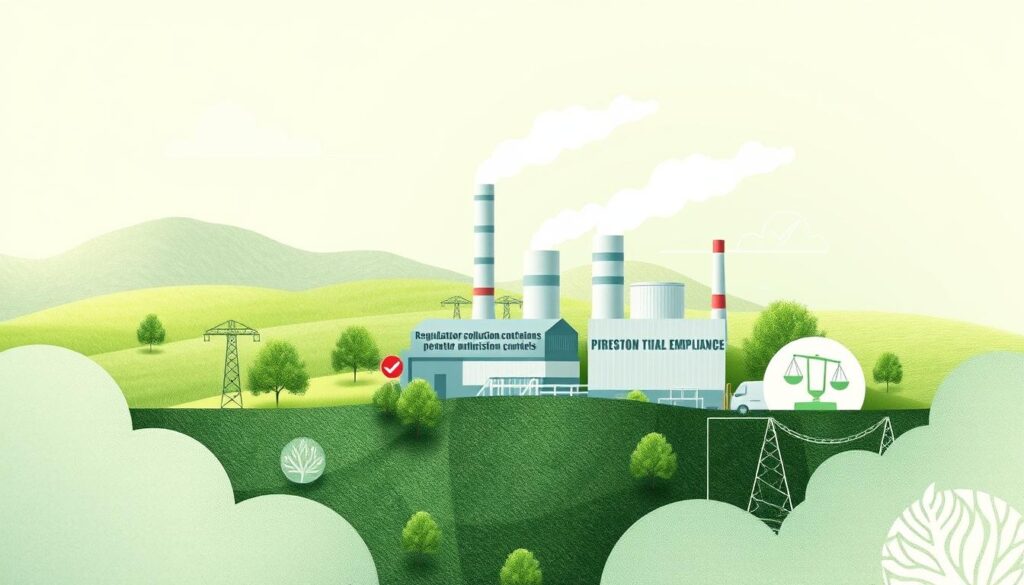
Claims and Incident Response
Managing claims and incident response is key when it comes to pollution liability coverage. Businesses need to be proactive to protect their operations. This helps reduce the impact of potential environmental incidents.
Reporting and Documentation
When an environmental incident happens, quick and detailed reporting is vital. Companies should have a clear process for documenting incidents. This includes:
- Notify the right authorities and regulatory bodies right away, as the law demands.
- Collect all the facts about the incident, like the date, time, location, and what happened.
- Keep detailed records of everything done, like cleanup efforts, talks with stakeholders, and costs.
- Work with pollution insurance solutions providers to meet policy needs and make the claims process smoother.
Good documentation shows a company’s commitment to the environment. It also helps with the environmental liability insurance claims process, if needed.
By tackling claims and incident response early, businesses can lessen the disruption and costs of environmental incidents. This protects their operations and reputation.
Risk Management Strategies
Today, businesses face many environmental rules and the risk of pollution. It’s key to manage these risks well to keep your business safe and profitable. We’ll look at ways to lower pollution risks and add pollution coverage to your risk plan.
Preventing pollution is a big part of managing risks. This means checking your facilities often, storing dangerous materials right, and having good emergency plans. Taking these steps can stop problems before they cost a lot.
Teaching your team about pollution risks is also crucial. When your employees know how to handle pollution, they can help keep your business safe. Training them on handling hazardous waste and following rules can make them more effective in preventing pollution.
| Risk Management Strategy | Key Benefits |
|---|---|
| Preventive Measures | Identification and resolution of potential issues before they escalate |
| Employee Training | Empowered workforce, improved response to pollution-related incidents |
| Pollution Liability Coverage | Financial protection and support in the event of a pollution-related claim |
Adding pollution liability coverage to your risk plan is vital. The right coverage can protect your business from pollution costs. It also helps you respond well to any pollution issues that might happen.
For your business to thrive, you need a strong plan for pollution risk mitigation, environmental pollution protection, and pollution coverage for businesses. This plan helps you deal with environmental rules and keeps your business successful for the long term.
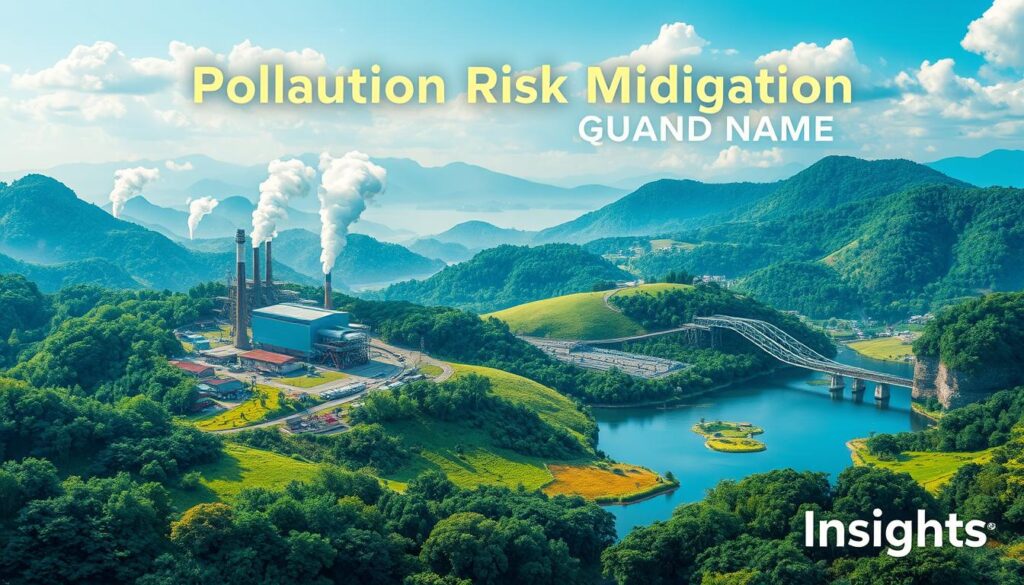
Choosing the Right Pollution Liability Provider
Protecting your business from environmental pollution risks is key. Choosing the right pollution liability provider is crucial. The options available vary, so it’s important to find the best fit for your needs.
To pick the best provider, consider these factors:
- Coverage Limits: Check if the coverage limits match your potential risks and operations size.
- Policy Terms and Conditions: Read the policy terms, exclusions, and limitations carefully. This helps you understand what’s covered and what’s not.
- Provider Reputation and Expertise: Choose a provider with a strong reputation in environmental liability insurance. They should understand your business’s unique challenges and regulations.
- Claims Handling and Support: Look at how the provider handles claims and supports you in case of an environmental incident or pollution-related claim.
By considering these factors, you can find the right pollution liability coverage for your business. This ensures you’re protected in the complex world of environmental liability insurance.
| Provider | Coverage Limits | Policy Terms | Expertise | Claims Support |
|---|---|---|---|---|
| ABC Insurance | $5 million per occurrence | Comprehensive coverage, few exclusions | Specializes in environmental liability insurance for small to medium-sized businesses | Dedicated claims team, 24/7 incident response |
| XYZ Insurance | $10 million per occurrence | Broad coverage, some industry-specific exclusions | Extensive experience in the industrial and manufacturing sectors | Responsive claims handling, on-site support |
| Eco-Protect Insurance | $2 million per occurrence | Tailored coverage for contractors and subcontractors | Specializes in contractor’s pollution liability insurance | Streamlined claims process, 24/7 incident hotline |
By carefully evaluating your options and choosing the right provider, you can protect your business. This ensures you’re covered from environmental incidents and regulatory compliance issues.
Conclusion
Pollution liability coverage is key for businesses of all sizes. It protects them from big financial and legal risks from environmental incidents. By knowing what this coverage includes, spotting pollution risks, and picking the right provider, companies can lower their environmental liability. This helps keep their operations running smoothly for the long term.
Whether it’s site-specific pollution liability or contractor’s pollution liability, having good environmental liability insurance is vital. Reviewing your current coverage and using strong risk management can help. This way, businesses can tackle environmental issues and follow changing rules.
We suggest you check your pollution coverage for businesses and team up with a trusted insurance provider. This ensures your business is safe from the money and reputation damage of environmental problems. By being proactive, you protect your business and help make the world a cleaner, greener place.

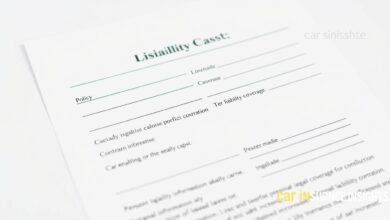
One Comment